WMG News - Latest news from WMG
AI triaging of shrapnel wounds developed through UK and Ukraine partnership
Researchers in the UK and Ukraine are teaming up to develop artificial intelligence (AI) that will help treat those wounded by shrapnel.
Scientists at WMG at the University of Warwick and the Kharkiv National University of Radio Electronics (NURE) in Ukraine are developing AI software that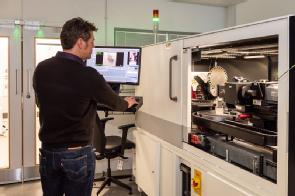 will help medics understand which patients require immediate treatment, due to life-threatening wounds that might not be obvious with the naked eye. The state-of-the-art technology enables users to feed data from a CT scan to a computer programme, which will help medics make quick decisions on which of the injured require most immediate treatment.
will help medics understand which patients require immediate treatment, due to life-threatening wounds that might not be obvious with the naked eye. The state-of-the-art technology enables users to feed data from a CT scan to a computer programme, which will help medics make quick decisions on which of the injured require most immediate treatment.
The project is one of 33 being discussed at the House of Lords this evening, to mark the one-year anniversary of the Twinning initiative – an institution-to-institution collaboration model which allows universities around the world to support their Ukrainian counterparts in real, concrete ways. It is funded by a £5m grant from Research England, administered by Universities UK International (UUKi).
Professor Mark Williams, WMG at the University of Warwick, said: “A huge problem for medics dealing with many severely injured people at the same time is the rapid identification of life-threatening injuries so they can prioritise who needs emergency surgery soonest. This is why we’re developing software with the team in Kharkiv to help address this issue. As well as being useful in other emergency situations such as earthquakes, the research is also applicable to doctors in trauma wards – already stretched by pressures experienced by the NHS – who need to triage patients quickly.
“For WMG’s part of the project, we will be creating phantom models using 3D imaging – replicas of human anatomy and shrapnel wounds. These will act as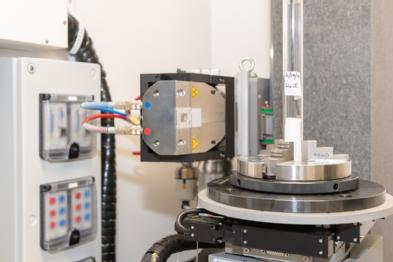 ‘test objects’, which experts in computer science can use to calibrate their technology and AI programme.
‘test objects’, which experts in computer science can use to calibrate their technology and AI programme.
“It is very exciting to be able to bring our expertise in Additive Manufacture at WMG to deliver a rapid solution to such an important humane need, allowing us to truly exploit the incredible advantages in speed of response and material complexity offered by this technology.”
Anastasiya Chupryna, coordinator of Radio Electronics-Warwick Allied Research and Development (REWARD) project at NURE said: “We would like to thank our partner Warwick University for supporting us in joint research activities. Within this project NURE and Warwick University will be able to solve extremely important problems. We believe that practical results of these projects will demonstrate significant impact and innovation solutions for society.”
WMG is considered the leading international role model for successful collaboration between academia and the public and private sectors by successive UK Governments. The WMG specific research is funded by a £179k grant from UUKi.
More here https://www.ukri.org/news/research-england-invests-in-uk-ukraine-university-twinning-scheme/
Ends
University of Warwick press office contact:
Annie Slinn
Communications Officer | Press & Media Relations |
Email: annie.slinn@warwick.ac.uk
Additive layer manufacturing supply chains to be protected from cyber-attacks in light of COVID-19
· Additive manufacturing was upped during the COVID-19 pandemic to make ventilators, however when production was up so were the number of cyber-attacks
· In order to continue production without disruption new technologies are needed, which researchers from WMG, University of Warwick aim to deliver thanks to a grant from EPSRC
· Working with partners the new technologies developed will secure the supply chain in case of another global threat
The COVID-19 pandemic highlighted just how vulnerable UK manufacturing supply chains are, as there was an increase in the volume of cyber- enabled attacks on cyber-physical systems. There is therefore an urgent need to develop technologies and methods to support disruption-resilient manufacturing.
enabled attacks on cyber-physical systems. There is therefore an urgent need to develop technologies and methods to support disruption-resilient manufacturing.
This has been made possible, thanks to over £1 million of funding from the EPSRC, which will enable Dr Greg Gibbons, Prof Carsten Maple and Dr Greg Epiphaniou from WMG, and other colleagues from Henley Business School and Surrey Business School, to research into disruption-resilient-manufacturing.
Their project, entitled, ‘Responsive Additive Manufacturing to Overcome Natural and Attack-based disruption (RAMONA)’, will address the need and opportunity for the UK to become global leaders in responsive manufacturing, taking advantage of the opportunities presented by UK strengths in Additive Manufacturing.
The importance and limitations of responsive manufacturing systems – those that are able to respond to minimise the impact of a disruption – in the UK have been brought to the fore by COVID-19. Traditional supply chain weaknesses have been exposed, creating a ‘watershed’ moment for additive manufacturing, which could be used to complement existing manufacturing supply chains and embed resilience within them.
This was evidenced by the Ventilator Challenge UK, where additive manufacturing was a key technology in supporting the production of thousands of ventilators for the NHS within 12 weeks.
Additive Manufacturing has particular strengths in supporting distributed manufacturing, on-demand production, and rapid development and approval of component design. However, this type of responsive manufacturing capability is uncommon and requires further development before it can be embedded as an industry wide capability.
This will be achieved by addressing the following challenges:
- How to develop effective techniques to detect disruption
- How to effectively and accurately analyse the disruption; and
- How to respond to disruption through reconfigured manufacture.
 Dr Greg Gibbons, Reader in Additive Manufacturing in WMG at Warwick, comments:
Dr Greg Gibbons, Reader in Additive Manufacturing in WMG at Warwick, comments:
“This award is an exciting opportunity to engage in this timely and highly impactful research. It will enable us to develop the technologies required by UK manufacturing to ensure robust and reliable supply chains that can respond rapidly and optimally to disruptive threats, making a real difference to the security of supply when faced with global threats such as we have seen during the COVID Pandemic.
“It is fantastic to be able to collaborate with scholars, as well as leading organisations across a range of industries including automotive, defence, security and healthcare in developing solutions to the key challenges facing manufacturing today.”
Dr Gibbons will be working alongside colleagues from WMG, Henley Business School, University of Reading, and Surrey Business School at the University of Surrey. They will also be working with multiple project partners from industry, including Royal Berkshire NHS Foundation Trust and Thales Ltd.
The research will begin later in the year (September 2021) and is due to finish in early 2024. It received a total grant of £1,024,124. Find out more details of the grant.
ENDS
7 JULY 2021
NOTES TO EDITORS
High-res images available at:
https://warwick.ac.uk/services/communications/medialibrary/images/march2014/dr_greg_gibbons.jpg
Caption: Dr Greg Gibbons, from WMG, University of Warwick
Credit: WMG, University of Warwick
For further information please contact:
Alice Scott
Media Relations Manager – Science
University of Warwick
Tel: +44 (0) 7920 531 221
E-mail: alice.j.scott@warwick.ac.uk
Novel magnetic stirrer speaks to lab equipment
A current problem for a wide range of chemists is when stirring a solution in the laboratory there is a need to check the properties of the solution and monitor how they change.
In the paper, ‘Monitoring chemistry in situ with the Smart Stirrer —a magnetic stirrer bar with an integrated process monitoring system’ published in the journal ACS Sensors, researchers from the School of Engineering, the Mathematics Institute and WMG at the University of Warwick present their innovative stirrer sensor.
The small device, called “Smart Stirrer”, performed a function of a conventional laboratory stir bar, has an integrated microprocessor and various sensors capable of wireless and autonomous report the conversion of properties of a solution. The advanced sensor stir bar is a capsule shaped magnet encased in plastic.
A beaker filled with a solution is placed on a platform that generates a rotating magnetic field, when the magnetic stirrer is placed in the solution it continuously rotates stirring the liquid.
The Smart Stirrer then monitors:
- Colour
- Transparency
- Conductivity
- Viscosity
- Temperature
Results are sent to a computer over Bluetooth, and any changes notify the user wirelessly. Although the idea of using magnetic stir bar with integrated sensors may not be entirely new, this new affordable, multi-sensor and easy programmable stirrer sensor device is first in its kind.
The concept is valuable to Research and Design laboratories and pharmaceutical and chemistry manufacturing industries because it allows wireless monitoring of several parameters of a chemical reaction simultaneously
Dr Dmitry Isakov, Assistant Professor at WMG, University of Warwick, from WMG at the University who led the study comments:
“We are still continuing research into the stirrer, the next revision of the stirrer sensor that will be smaller size and with a bit more sophisticated sensors. We are collaborating with several chemists from Warwick University. This will help us to understand their needs and help to improve the device.
“The beauty of the Smart Stirrer is that it can be used everywhere, such as a sealed vessels thus minimising the contamination of the reactor. It may give a push to new discoveries as well. It is easy to integrate the stirrer into the labware family and make it “speak” to other lab equipment.”
Samuel Baldwin, from the Mathematics institute at the University of Warwick worked on the smart stirrer during his WMG summer internship, he comments:
“I have found every stage of development of the Smart Stirrer to be very fulfilling, from circuit design, to manufacturing to finally programming. We have leveraged state-of-the-art technology to build a device with very low power consumption, a broad range of sensor capabilities, and high data-throughput over the Bluetooth Low Energy platform.
“The laboratory of the future is that of automation, reproducibility and safety; our all-in-one Smart Stirrer device eliminates the need for a vast array of individual wired sensors whilst maintaining the control and customisability that one would expect from any piece of advanced laboratory equipment. I look forward to seeing the Smart Stirrer solve laboratory problems and help us understand complex reactions.”
NOTES TO EDITORS
High-res images available at:
https://warwick.ac.uk/services/communications/medialibrary/images/july_2020/smartstirrer.jpg
Caption: Demo of how the Smart Stirrer works.
Credit: WMG, University of Warwick
https://warwick.ac.uk/services/communications/medialibrary/images/july_2020/smartstirrercartoon.jpg
Caption: Demo of how the smart stirrer works – Cartoon version
Credit: WMG, University of Warwick
Paper available to view at: https://pubs.acs.org/doi/abs/10.1021/acssensors.0c00720
WMG staff use 3D printing in the fight against COVID-19
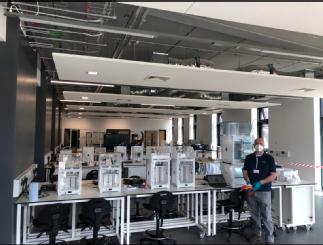 A team of WMG academics, technicians and engineers are using their 3D Printing skills, to help in the fight against COVID-19, by producing face shields for NHS front-line staff.
A team of WMG academics, technicians and engineers are using their 3D Printing skills, to help in the fight against COVID-19, by producing face shields for NHS front-line staff.
As the supply of PPE became a key issue in the pandemic, technicians Phil Gibbons, Joseph Benjamin and Martin Worrall, and PhD student Kevin Couling responded to 3D Crowd’s call asking volunteers to use their 3D Printing capabilities to produce face shields.
WMG’s nine 3D printers have now been programmed to run around the clock producing more than 400 shields each week.
The first batch of face shields have now been vigorously inspected, cleaned, packaged and distributed to 3D Crowd’s central assembly station in Warwickshire. They will now be sent to organisations running low on supplies.
The team have also managed to order extra materials and will keep the printers running until supplies literally run out.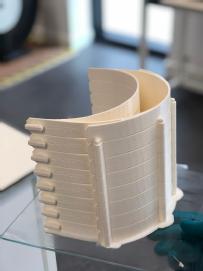
Reader Greg Gibbons explains: “Demand for PPE is incredibly high, and we are in a unique position to be able to help.
“We have 3D Printers running in our Degree Apprenticeship Centre (DAC) and we are also planning to open up our Materials Engineering Centre (MEC) to enable mass production of the shields.”
In addition to the work with 3D Crowd, and with funding from WMG Centre High Value Manufacturing Catapult, the team are also working in collaboration with Queen Mary University of London on the development of an injection moulding process for face shield to enable mass production of the frame.
Associate Professor Jérôme Charmet, and Post-Doctoral Research Associate Rui Rodrigues explain: “It is fantastic that we are able to respond to this call and work towards providing the protection to the NHS that is so desperately needed.
“We are now finalising a tool design before we begin production. Once the process is up and running we then plan to transfer manufacture to Andel Plastics, an Injection Mould SME, who will continue with large scale production.”
The digital journey – are you ready?
Are you a business who could benefit from automating your manufacturing processes?
Breakfast session with our experts: Wednesday 27th June, 8am to 10am
Our Business Team are holding a breakfast meeting, on Wednesday 27 June, to help businesses prepare and take advantage of the revolution in digital industry.
This session will show how collecting data can give you a greater insight into how to run your machines and operations more effectively, plan maintenance and introduce new processes without scarifying productivity. It will also show how new measurement techniques can give greater in-line data and how computer control has led to an entirely new way to make things.
Local school wins coveted place at international F1 in Schools competition
 Four pupils from North Leamington School have won the national final for F1 in Schools and will now represent the UK at the world finals, which are being held in Abu Dhabi in November. Academics from WMG have been working with the students to help them to develop 3D printed parts for their car, which won the UK competition at the NEC earlier this month.
Four pupils from North Leamington School have won the national final for F1 in Schools and will now represent the UK at the world finals, which are being held in Abu Dhabi in November. Academics from WMG have been working with the students to help them to develop 3D printed parts for their car, which won the UK competition at the NEC earlier this month.
The team from Leamington Spa, named Whittle Wonders, has been supported by WMG for the last three years of the competition. Dr Greg Gibbons, Head of Additive Layer Manufacturing Research at WMG helped the team to produce 3D printed parts for their cars, including the front nose cone and aerofoil components.
Submarine students dive into international competition
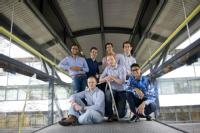 Engineering students at the University of Warwick are working to achieve their dream of designing and building a human-powered submarine.
Engineering students at the University of Warwick are working to achieve their dream of designing and building a human-powered submarine.
On July 7, the Warwick Sub team of seven finalists will be competing in the four-day European International Submarine Race (eISR) at Gosport’s Ocean Basin, the biggest covered water space in Europe. However, their first challenge on the path to glory will be raising enough funds to enable them to manufacture the vessel.
Warwick helps students with disabilities 3D-print objects to ease their everyday lives
 The University of Warwick is helping students with physical disabilities from a local college become their own product designers so they can 3D-print personalised objects that help them in their everyday lives.
The University of Warwick is helping students with physical disabilities from a local college become their own product designers so they can 3D-print personalised objects that help them in their everyday lives.
Students at Hereward College in Coventry, located close to the University of Warwick campus, are tapping into university expertise in additive layer manufacturing (commonly known as 3D printing) and adaptive systems so they can create assistive equipment that is adapted to their own personal needs.
By learning to use computer-assisted design technology through sessions with staff and students from the University of Warwick, a group of Hereward students with restricted physical movement have come up with solutions to every-day challenges, such as eating and drinking, which they can print out with the click of a button.
WMG helps Small Enterprises Solve Low Volume Manufacturing Challenges
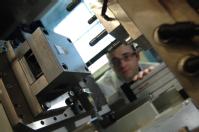 WMG’s SME Team at the University Warwick are to reveal how they can help West Midlands SMEs solve low volume manufacture challenges, at a special free event on the 3rd December designed to help SMEs successfully take a product idea into low volume manufacture.
WMG’s SME Team at the University Warwick are to reveal how they can help West Midlands SMEs solve low volume manufacture challenges, at a special free event on the 3rd December designed to help SMEs successfully take a product idea into low volume manufacture.
WMG researchers will show how they are working with injection moulding company Barkley Plastics Ltd to deliver low volume injection moulding solutions for several new products, including an innovative medical product, through the novel, cost effective use, of Additive Layer Manufacturing (3D Printing).
ALM technology has been used to print polymer inserts that are capable of producing more than 200 injection moulded parts. With a build time of only 4 hours and a cost per set in the low hundreds of pounds, it is a highly attractive manufacturing route for companies looking to bring new products to market.
3D printing brings Da Vinci’s anatomical drawings to life
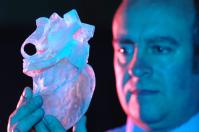 The Edinburgh International Festival (EIF) has been wowed this month by the ‘Leonardo da Vinci: Mechanics of Man’ exhibition; and 3D printing from the University of Warwick has created one of the big talking points.
The Edinburgh International Festival (EIF) has been wowed this month by the ‘Leonardo da Vinci: Mechanics of Man’ exhibition; and 3D printing from the University of Warwick has created one of the big talking points.
Collaborative work between WMG and Warwick Medical School created translucent 3D plastinations that use Leonardo Da Vinci’s original drawings of the human anatomy. The exhibition, which runs until 10 November 2013, sees the drawings, which are over 500 years old, side by side with plastinations, 3D scans and a translucent 3D heart.
and Warwick Medical School created translucent 3D plastinations that use Leonardo Da Vinci’s original drawings of the human anatomy. The exhibition, which runs until 10 November 2013, sees the drawings, which are over 500 years old, side by side with plastinations, 3D scans and a translucent 3D heart.
The heart was generated by transferring an MRI image into a STereoLithography (STL) file. The software then slices this STL file into layers that can be 3D printed by jetting a liquid polymer layer-by-layer, which is instantaneously solidified through the use of ultraviolet light.
